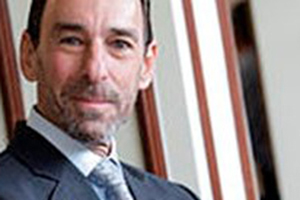Is this column fake news?

By: José Azel - 15/03/2023
Share:
First, let’s get the history right. Fake news is not new. As far back as the 13th century B.C., Rameses the Great spread lies and propaganda portraying the Battle of Kadesh as a great victory for the Egyptians when, in fact, the battle was a stalemate. During the first century B.C., Octavian ran an effective misinformation campaign portraying Mark Antony as a drunkard, and a puppet of the Egyptian queen Cleopatra. Fake news also has consequences. After his defeat in the Battle of Actium, Mark Antony killed himself upon hearing fake news rumors that Cleopatra had committed suicide.
Fake news also played a role in our Founding. Benjamin Franklin wrote fake news about murderous scalping Indians working with King George III in an effort to influence public opinion in favor of the American Revolution. Also, supporters of slavery spread fake news about violent slave rebellions. In war all sides use fake news profusely to mislead the enemy. Joseph Goebbels made a specialty of fake news as Nazi Germany’s Minister of Propaganda. And the Soviet Union created the image of a prosperous society when, in fact, it was an impoverished nation.
Fake news is not new, but the age of social media has expanded its scope. The term is a neologism, and it is helpful to identify different types of fake news. I particularly like the distinctions made by the co-founder of First Draft News, Dr. Claire Wardle. She classifies fake news as:
1. Satire or parody, with no intention to cause harm, but with the potential to fool.
2. False connection, when headlines, visuals or captions do not support the content.
3. Misleading content, misleading use of information to frame an issue or an individual.
4. False context, when genuine content is shared with false contextual information.
5. Impostor content, when genuine sources are impersonated with false, made-up sources.
6. Manipulated content, when genuine information or imagery is manipulated to deceive.
7. Fabricated content, when new content is 100 percent false, designed to deceive and do harm.
Next, let’s realize that fake news is not an American phenomenon. I was recently in Finland, a country that shares an 832-mile border with Russia and is a constant target of disinformation campaigns organized by the Russian government. Since Finland declared independence from Russia, over 100 years ago, it has faced untruthful propaganda campaigns from its eastern neighbor designed to undermine Finnish society. Russia, of course, denies this. However, the problem took on a new urgency in 2014 after Russia annexed Crimea and backed rebels in eastern Ukraine.
Finland has a long tradition of reading and has the highest score for reading performance of the 70 OECD nations rated by the Program for International Student Assessment. Helsinki’s new state-of-the-art, $110 million-dollar, library is a magnificent work of art, and the 5.5 million Fins borrow 68 million books per year. That is over 12 books per year per person. They lovingly refer to their new library as “Helsinki’s living room.” Finland also ranked first out of 35 counties in a study measuring resilience to fake news. So, what is the Finnish approach to fake news?
Importantly, they have fought the temptation to overregulate the media rejecting the idea of broad legislation that could jeopardize free speech. Very zealous of their democracy, Finland has launched an education initiative to prepare citizens of all ages to identify false information. Beginning in kindergarten, they have reformed their education system to emphasize critical thinking.
Using a digital literacy “toolkit,” elementary to high school students learn to examine claims in social media posts. Before they like or share something in social media they are taught to question: Who wrote this? Where has it been published? Is there a secondary source? The program combines fact-checking with critical thinking.
Finland’s educational strategy seems to be winning the war on fake news and a number of other countries are taking notice. A recent election encouraged citizens to think about fake news with the slogan: “Finland has the world’s best elections - think about why.”
«The opinions published herein are the sole responsibility of its author».